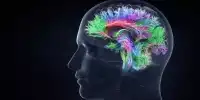It was once thought that restoring vision to the blind would necessitate a miracle. Researchers have now demonstrated that restoring limited vision to people suffering from retinitis pigmentosa, a previously permanent type of blindness, is possible. A process known as optogenetics was used by doctors to restore partial vision to a blind person using gene therapy and a pair of special goggles.
Two decades after an unusually severe case of the eye condition retinitis pigmentosa robbed a French man of his vision, experimental gene therapy appears to have restored some of it.
According to the BBC, doctors in France used a new gene therapy technique called optogenetics to reverse a man’s blindness. Optogenetics, which uses light to activate specific brain cells, is a common tool in neuroscience research, but it is still relatively new in the world of medicine.
Researchers demonstrated that restoring limited vision to people suffering from retinitis pigmentosa, a historically permanent type of blindness, is within reach.
According to research published Monday in the journal Nature Medicine, the light-detecting cells in the man’s retina had long since died off, so the doctors inserted an algae gene into the surviving cells in the area that programmed them to produce channelrhodopsins, a protein commonly found in algae that helps photosynthetic microbes find and migrate toward sources of light. It took a lot of practice, but the man eventually learned how to see again, beginning with the large white stripes of a crosswalk.
A genetic mutation that destroys light-sensitive photoreceptor cells causes retinitis pigmentosa. Normally, the cells absorb and translate light into brain signals. Although the genetic condition is considered rare, it still affects approximately two million people worldwide. The disorder had destroyed the 58-year-old man’s vision; he could still sense the presence of light but couldn’t make out what he was seeing.
“This patient was initially frustrated because it took a long time between the injection and the time he started to see something,” Dr. José-Alain Sahel, who treated the patient at the Institute of Vision in Paris, told the BBC.

“However, when he began to report spontaneously and saw the white stripes coming across the street, you can imagine how excited he was. “We were all ecstatic,” he added. Because photosynthetic algae and the human eye are so dissimilar, the new optogenetic gene therapy did not restore the man’s vision to normal levels. It also prevented him from seeing in color.
Researchers in the field of optogenetics use gene therapy to change the eye’s production of light-sensitive proteins (called channelrhodopsins). The doctors used a combination of gene therapy and a pair of special goggles in this study to help a man with retinitis pigmentosa see light and shapes again.
They used AAV gene therapy, which involves using a disabled virus particle as a delivery vehicle for a beneficial payload. In this case, a cocktail of light-sensitive protein genes was delivered directly to his damaged retina cells in his worst-seeing eye.
Another logistical challenge was that as his vision returned, it became clear that the channelrhodopsins only responded to amber-colored light, so the man needed to wear special goggles that translated a video feed into the correct wavelength so he could see what was going on around him.
Despite the limitations of the therapy — retinitis pigmentosa is a complex genetic disease, and algae proteins are a crude workaround — the doctors told the BBC that they are extremely encouraged that they have discovered a medical application for optogenetics, and they believe that more treatments relying on it will emerge soon.
The researchers report that their ground-breaking gene therapy was successful in partially reversing the man’s retinitis pigmentosa and restoring some of his vision — 40 years after he had lost most of it. He could see surrounding objects, distinguish between them, and even reach out and touch them with a pair of special goggles that used light bursts to stimulate his vision — things he couldn’t do before the treatment.
Although the researchers emphasize that more testing is required before this type of therapy can be approved for use on patients with retinitis pigmentosa, the results are promising. Opogenetics and light-stimulating devices may be the answer for people who are nearly completely blind.














